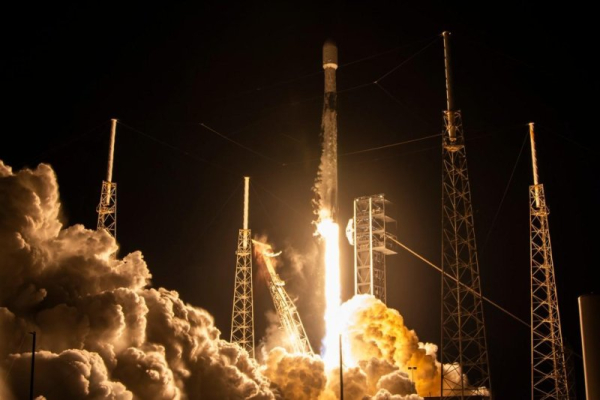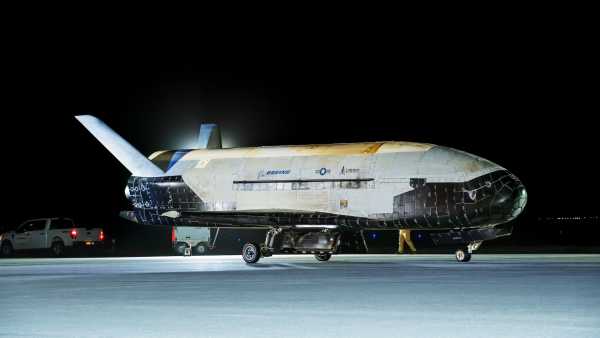
(Image credit: Veloz Alexander, U.S. Space Force)
The U.S. military's X-37B orbital test vehicle is scheduled to make its eighth flight into space on August 21, 2025. Much of what the X-37B does in space is classified. However, it does serve in part as a testing ground for cutting-edge experiments.
One such experiment presents a potential alternative to GPS that uses quantum science as a navigation tool: a quantum inertial sensor.
Satellite systems like GPS are used everywhere in our daily lives, from smartphone maps to aviation and logistics. However, GPS is not available everywhere. This technology could revolutionize the navigation of spacecraft, aircraft, ships, and submarines in conditions where GPS is unavailable or unreliable.
You may like
-
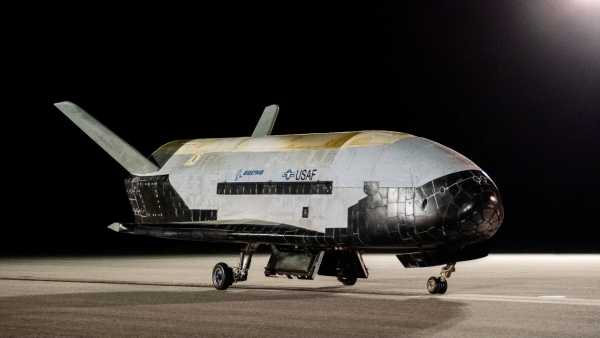
Trump's 'One Big Beautiful Bill' Gives US Space Force $1B For Secretive X-37B Space Plane
-

Scientists have found a new way to detect invisible 'plasma bubbles' lurking in the Earth's upper atmosphere
-

Breakthrough quantum computer can solve problems 200 times faster than a supercomputer
In space, especially beyond Earth orbit, GPS signals become unreliable or simply disappear. The same thing happens underwater, where submarines have no access to GPS at all. And even on Earth, GPS signals can be jammed (blocked), distorted (causing the GPS receiver to think it is in a different location), or disabled, such as during a conflict.
This makes navigation without GPS a critical challenge. In such situations, having navigation systems that operate independently of external signals becomes essential.
Traditional inertial navigation systems (INS), which use accelerometers and gyroscopes to measure a vehicle’s acceleration and rotation, provide independent navigation because they can estimate location by tracking its movement over time. Imagine sitting in a car with your eyes closed: You still feel the turns, stops, and accelerations, which your brain integrates to determine your location over time.
However, over time, without visual cues, small errors will accumulate and you will completely lose your bearings. The same thing happens with classic inertial navigation systems: as small measurement errors accumulate, they gradually go off course and require correction using GPS or other external signals.
Where quantum mechanics helps
If you think about quantum physics, you might imagine a strange world where particles behave like waves and Schrödinger's cat is simultaneously alive and dead. These thought experiments do indeed describe the behavior of tiny particles like atoms.
At very low temperatures, atoms obey the rules of quantum mechanics: they behave like waves and can exist in several states at once—two properties that underlie quantum inertial sensors.
The quantum inertial sensor on board the X-37B uses a technique called atomic interferometry, which cools atoms to temperatures close to absolute zero so that they behave like waves. Using precisely tuned lasers, each atom is split into what’s called a superposition state, like a Schrödinger cat, so that it simultaneously moves along two paths that then recombine.
Because an atom behaves like a wave in quantum mechanics, these two paths interfere with each other, creating a pattern like overlapping ripples in water. Encoded in this pattern are detailed information about how the atom’s environment affected its motion. In particular, tiny changes in motion, such as sensor rotations or accelerations, leave noticeable traces in these atomic “waves.”

The X-37B is preparing for its eighth flight.
Compared to classical inertial navigation systems, quantum sensors are an order of magnitude more sensitive. Since the atoms are identical and do not change, unlike mechanical or electronic components, they are much less susceptible to drift or displacement. The result is long-term, highly accurate navigation without the need for external sources.
The upcoming X-37B mission will be the first test of quantum inertial navigation at this level in space. Previous missions, such as NASA's Cold Atom Laboratory and the German Space Agency's MAIUS-1, have launched atom interferometers into orbit or suborbital flights and successfully demonstrated the physics of atom interferometry in space, although not specifically for navigation purposes.
In contrast, the X-37B is designed to be a compact, high-performance, and reliable inertial navigation module for real-world long-duration missions. It takes atom interferometry from pure science to practical aerospace applications. That's a big step forward.
This has important implications for both military and civilian spaceflight. For the U.S. Space Force, it is a step toward improving operational resilience, especially in situations where GPS might fail. For future space exploration, such as missions to the Moon, Mars, or even deep space, where autonomy is critical, a quantum navigation system could serve not only as a reliable backup, but also as a primary means of ensuring that signals from Earth are lost.
Quantum navigation is just part of a larger wave of quantum technologies moving from lab research into real-world applications. While quantum computing and quantum communications often get the spotlight, systems like quantum clocks and quantum sensors are likely to be the first to see widespread use.
Countries like the US, China, and the UK are investing heavily in quantum-inertial sensors, with recent tests on board aircraft and submarines showing promising results. In 2024, Boeing and AOSense conducted the world’s first test of quantum-inertial navigation on board a manned aircraft.
RELATED STORIES
— The US military says the top-secret X-37B space plane returned to Earth in the dead of night after a mysterious 434-day mission.
— Quantum compasses are moving closer to replacing GPS after scientists placed a refrigerator-sized laser key system on a microchip.
— A cosmic-ray-based GPS system that tracks underground movements could change the way we respond to disasters.
This enabled continuous navigation without GPS to be demonstrated for approximately four hours. That same year, the UK conducted the first publicly acknowledged flight test of quantum navigation on a commercial aircraft.
This summer, the X-37B mission will put these advances into orbit. Because of its military nature, the test may remain quiet and unpublicized. But if it is successful, it could go down in history as the moment when space navigation took a quantum leap forward.
This edited article is republished from The Conversation under a Creative Commons license. Read the original article.

Samuel Lellouche, Associate Professor of Digital Twinning, Department of Physics and Astronomy, University of Birmingham
Samuel Lellouche is Associate Professor of Digital Twins at the University of Birmingham and a co-investigator at the UK Quantum Centre for Sensors and Timing. He collaborates with physicists, engineers and industry to create digital twins of quantum sensors, accelerating their application in navigation, space, civil engineering and fundamental physics. In 2015, he was awarded the IFRAF/GdR Atomes Froids Young Researcher Award.
You must verify your public display name before commenting.
Please log out and log back in. You will then be prompted to enter a display name.
Exit Read more

Trump's 'One Big Beautiful Bill' Gives US Space Force $1B For Secretive X-37B Space Plane

Scientists have found a new way to detect invisible 'plasma bubbles' lurking in the Earth's upper atmosphere

Breakthrough quantum computer can solve problems 200 times faster than a supercomputer
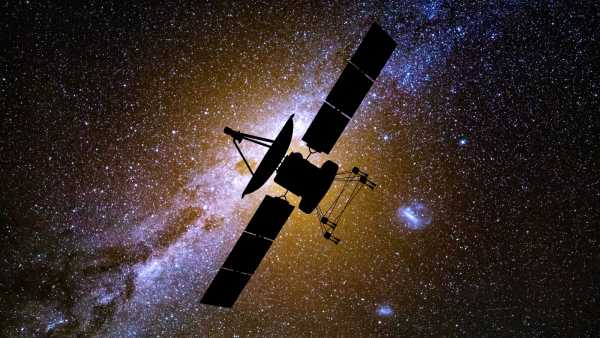
Satellite coated in super-dark 'Vantablack' paint to launch into space next year to combat serious problem
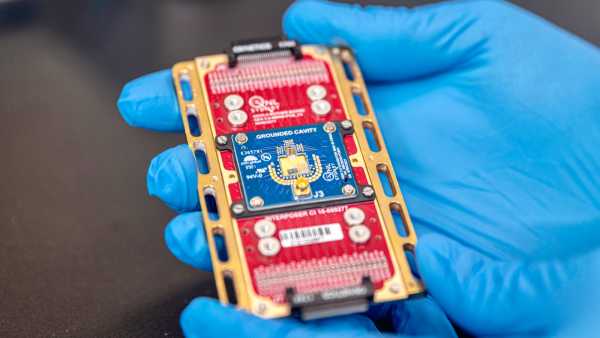
Millions of qubits on a single quantum processor are now possible after cryogenic breakthrough

Early tests show ChatGPT can control a spacecraft surprisingly well. Engineering News

China Builds Record-Breaking Floating Wind Turbine That Could Change the Face of Renewable Energy

New York to Los Angeles in 3 hours? A presidential order could make it possible by 2027, reopening the door to commercial supersonic flight.

Will we ever be able to build a transatlantic tunnel?

MIT's High-Tech 'Bubble Wrap' Turns Air Into Safe Drinking Water — Even in Death Valley
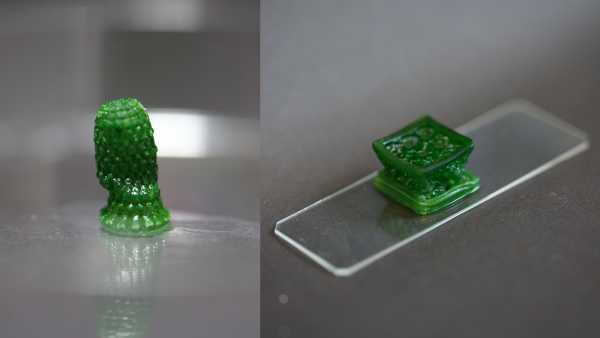
Scientists Invent Photosynthetic 'Living' Material That Sucks CO2 Out of the Atmosphere
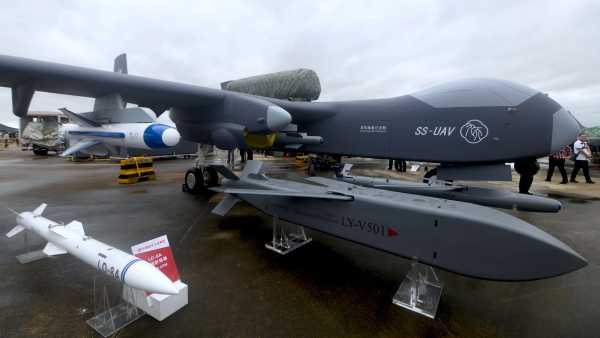
China has developed the world's largest drone carrier – and it's ready to launch. Latest news

Rare 'Black Moon' Rising This Weekend: What Is It and What Can You See?

Watch as Hurricane Erin reaches Category 5 strength in lightning strikes.

A gene that differs between humans and Neanderthals could shed light on the species' extinction, a study in mice suggests.
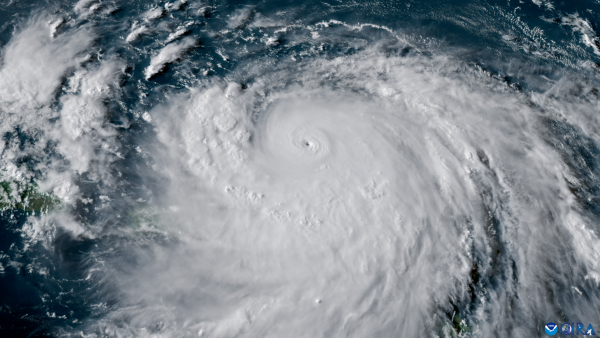
Forecasters warn Hurricane Erin could bring 100-foot waves to the East Coast this week.

OpenAI ChatGPT Agent can take control of your PC, performing tasks on your behalf, but how does it work and what's the point?
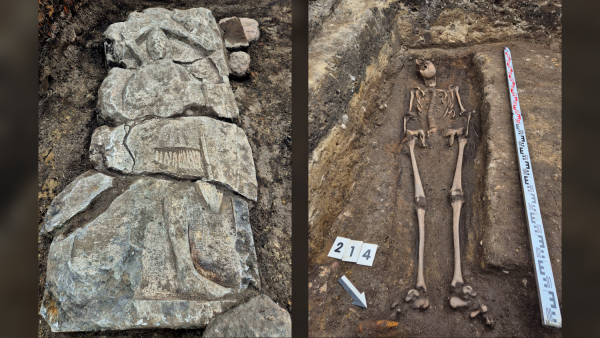
Medieval Knight 'Lancelot' and His Stunning Stone Tomb Found Under Ice Cream Shop in Poland LATEST ARTICLES

1A rare 'black moon' will rise this weekend: what is it and what can you see?
Live Science is part of Future US Inc., an international media group and leading digital publisher. Visit our corporate website.
- About Us
- Contact Future experts
- Terms and Conditions
- Privacy Policy
- Cookie Policy
- Accessibility Statement
- Advertise with us
- Web Notifications
- Career
- Editorial Standards
- How to present history to us
© Future US, Inc. Full 7th Floor, 130 West 42nd Street, New York, NY 10036.
var dfp_config = { “site_platform”: “vanilla”, “keywords”: “type-news-daily,type-crosspost,exclude-from-syndication,serversidehawk,videoarticle,van-enable-adviser-
Sourse: www.livescience.com




